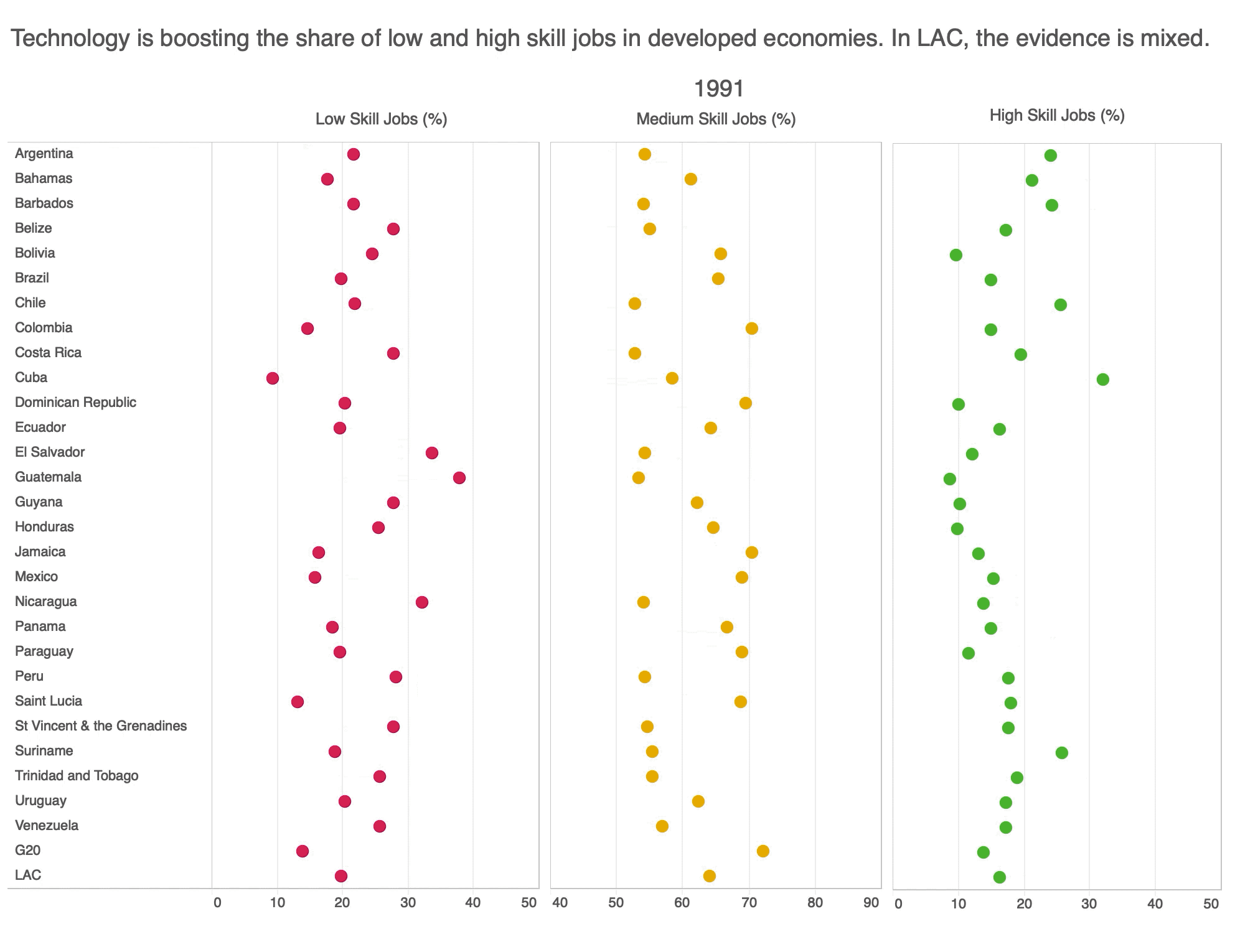
The evolution of technology has always shaped economic and social outcomes by determining how people organize to produce goods and services. This process is punctuated occasionally by technological discontinuities, where changes are abrupt. These periods are called industrial revolutions.
The so called Fourth Industrial Revolution is exactly this- a period of technological discontinuity. But why is it different from previous periods? Technology is changing much faster than ever before. Cycles are shorter, and obsolescence realizes itself much faster. The pace and rate of change are exceeding, so far, our capacity to adapt. Additionally, technology has allowed the outsourcing of parts of the production process and thus, transformed employment relationships, in many cases transferring risks from the employer to the employee. Finally, the current wave of technological improvements is, increasingly, able to develop machines that perform the kind of tasks that we did not think were susceptible to automatization: while we were used to machines that replace routine/predictable work, we are now facing the reality that non-routine tasks could be also performed by robots.
To understand the problem, it is important to consider that any occupation is composed of a set of tasks. Some of these tasks are routine, some non-routine, some manual, and some cognitive. For instance, a lawyer might spend time doing a lot of paperwork (i.e. a routine task), but the occupation requires a significant amount of reasoning (i.e. a cognitive task). This is important because machines replace tasks, not jobs. For example, employment in cleaning services did not disappear because of the emergence of the vacuum cleaner. Instead, those employed in the cleaning sector were able to spend less time sweeping and reallocate their time to other (perhaps more productive) cleaning tasks. This is the case because the set of tasks that compose that occupation are diverse and contain a number of non-routine tasks that are not easily replaceable. Now, consider the paradigmatic case of cashiers. Since the job is highly intense in routine tasks (put simply, taking money in or out of accounts) it was easily replaced by ATMs.
In fact, it has been largely documented that in developed countries the share of jobs intensive in routine tasks (usually associated with “medium skilled” jobs) has decreased while those intensive in non-routine tasks, both manual and cognitive (usually associated with “low skilled” and “high skilled” jobs, respectively), have increased in a phenomenon known as job polarization. You can observe this phenomenon taking place in G20 countries in the graph.
In Latin America and the Caribbean (LAC) countries, however, we do not observe this pattern of job polarization as clearly. As a whole, the share of high skill employment has been slowly increasing while the share of middle skill employment has been slowly decreasing. However, this is taking place at a less pronounced rate than what we observe in G20 countries. The share of low skilled employment has remained roughly constant. The regional average for LAC, however, hides a lot of heterogeneity. In Belize, for example, middle skilled employment has increased a lot at the expense of high skilled employment. Uruguay, on the other hand, seems to show a pattern more aligned with job polarization theory.
A few words of caution at this point. First, the region is known for having highly informal labour arrangements, which could be associated with slow technology adoption and therefore a slow process of job polarization (if any) in comparison to that of the G20 economies. Second, it cannot be inferred from this argument that high skilled wages are increasing in LAC countries. In fact, the evidence suggests the contrary (see Rodríguez-Castelán et al, 2016). Finally, it is important to keep in mind the distinction between technical and economic feasibility. Even if technology could replace some tasks, firms might still choose not to do so because of high cost of adoption or low gains in profitability.
In fact, the adoption of new technologies and its ultimate impact on LAC countries will depend on the occupational structures of countries and how governments and private sector actors react to the new environment. Since technology substitutes routine and manual tasks and complements non-routine and cognitive ones, the policy challenge is to ensure workers have the right kind of skills—such as critical thinking, reasoning, analytical and interpersonal abilities that machines do not have for the time being. Countries may need to adapt education policies, ranging from formal schooling to on-the-job-training. Fiscal policy is also critical as a means of redistributing the productivity gains derived from technological improvements. However, it should be taken into account that taxing robots could discourage their adoption and result in a missed opportunity for productivity gains.
There is a difficult equilibrium to be reached in the complex backdrop of uncertain circumstances and fears that a large share of employment is under the threat. However, it is important to note that we do not observe a persistent increase in unemployment around the world. This signals that human labour is reallocating towards new occupations and even brand-new sectors. This requires policies that prepare workers, so they can accommodate technical progress and be able to quickly adapt to change. Otherwise, we run the risk of machines telling us “Hasta la vista, baby”.
*Arnold Schwarzenegger in Terminator 2

 Locations
Locations
